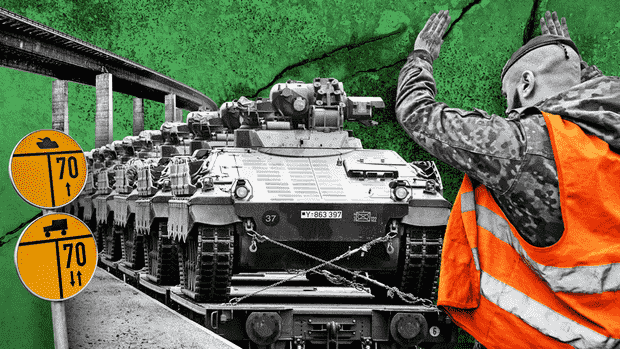Anyone who asks the federal and state governments these days only gets sparse information – above all, nobody feels responsible.
(Photo: dpa, Getty Images [M])
Berlin The comrades of the Armed Forces Command (FüSK) deliberately declared their confidential meeting unspectacular: The officers called their meeting with the freight transport experts from Deutsche Bahn AG “Lessons learned” workshop. The small group discussed the “prioritization” of military transports on the rail network and the “optimization” of processes.
Everything was to be subordinated to one goal: the Bundeswehr wanted to be “ready to move” within five days in order to relocate heavy equipment such as a Leopard tank or tens of thousands of soldiers. Something like that only works with the train.
In the late summer of 2020, the Bundeswehr was already playing out the scenario that is slowly threatening to become reality with the war in Ukraine: a “major disaster situation in Germany”.
That’s what generals call the transit of Allied equipment across the republic to the east, with material landings at the seaports and airfields and possibly a troop deployment, while at the same time refugees and, in the worst case, the wounded stream into the country – cyber attacks and disinformation included.
Read on now
Get access to this and every other article in the
Web and in our app free of charge for 4 weeks.
Continue
Read on now
Get access to this and every other article in the
Web and in our app free of charge for 4 weeks.
Continue
